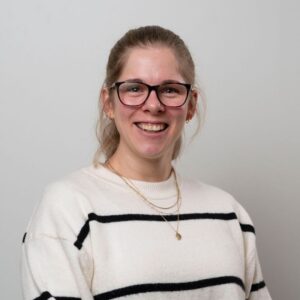Tuesday 21st October 2025 from 19:00 for 19:30
Abingdon United Football Club (Northcourt Rd, OX14 1PL, Abingdon)
 Antibodies are the body’s first line of defence against intruding pathogens (e.g. viruses and bacteria) and allergens (e.g. pollen and peanuts). An accidental discovery that camelids (and sharks!) have unique antibody structures resulted in the miniaturisation of the antibody to create smaller and more stable versions called nanobodies. At the Rosalind Franklin Institute, we have utilised this peculiarity of camelid antibodies to identify nanobodies which we have used to target and neutralise COVID19. In this talk Dr. Eyssen will take us through how these unique antibodies were discovered, how they go about making these nanobodies and how they use these as tools to fight viruses such as COVID19.
Antibodies are the body’s first line of defence against intruding pathogens (e.g. viruses and bacteria) and allergens (e.g. pollen and peanuts). An accidental discovery that camelids (and sharks!) have unique antibody structures resulted in the miniaturisation of the antibody to create smaller and more stable versions called nanobodies. At the Rosalind Franklin Institute, we have utilised this peculiarity of camelid antibodies to identify nanobodies which we have used to target and neutralise COVID19. In this talk Dr. Eyssen will take us through how these unique antibodies were discovered, how they go about making these nanobodies and how they use these as tools to fight viruses such as COVID19.
Speaker: Dr. Lauren Eyssen
 Dr. Eyssen has a PhD in biochemistry from the University of KwaZulu-Natal in South Africa where she focussed on developing diagnostics for animal African trypanosomiasis by targeting several proteases using both antibodies and single chain variable fragments (scFvs). During her first first postdoc in South Africa, she used scFvs to investigate ways to negate the need for the culture of live, human infective, trypanosomal parasites which are utilised in current diagnostics. In Poland, she undertook her second postdoc investigating the activity of neutrophil proteases in children with neutropenia using activity based probes. Her third and final postdoc was at the Franklin where she focussed on the development of the nanobody discovery platform. Dr. Eyssen is now a scientist at the Franklin currently managing the day to day running of the nanobody discovery platform.
Dr. Eyssen has a PhD in biochemistry from the University of KwaZulu-Natal in South Africa where she focussed on developing diagnostics for animal African trypanosomiasis by targeting several proteases using both antibodies and single chain variable fragments (scFvs). During her first first postdoc in South Africa, she used scFvs to investigate ways to negate the need for the culture of live, human infective, trypanosomal parasites which are utilised in current diagnostics. In Poland, she undertook her second postdoc investigating the activity of neutrophil proteases in children with neutropenia using activity based probes. Her third and final postdoc was at the Franklin where she focussed on the development of the nanobody discovery platform. Dr. Eyssen is now a scientist at the Franklin currently managing the day to day running of the nanobody discovery platform.





